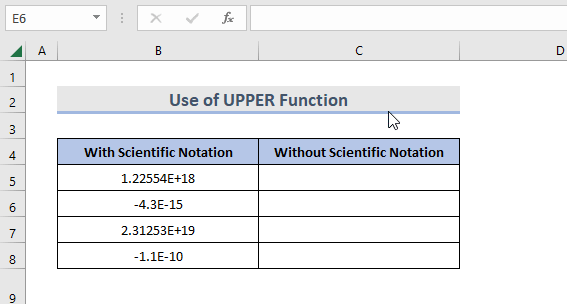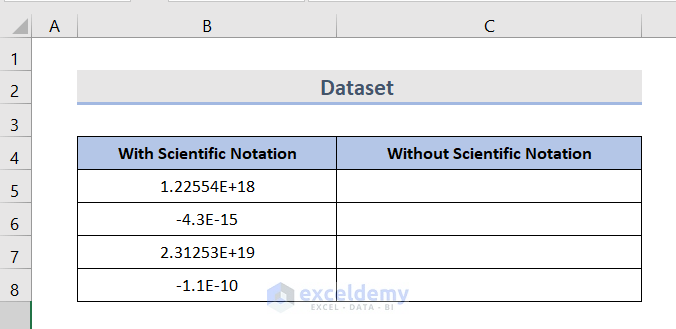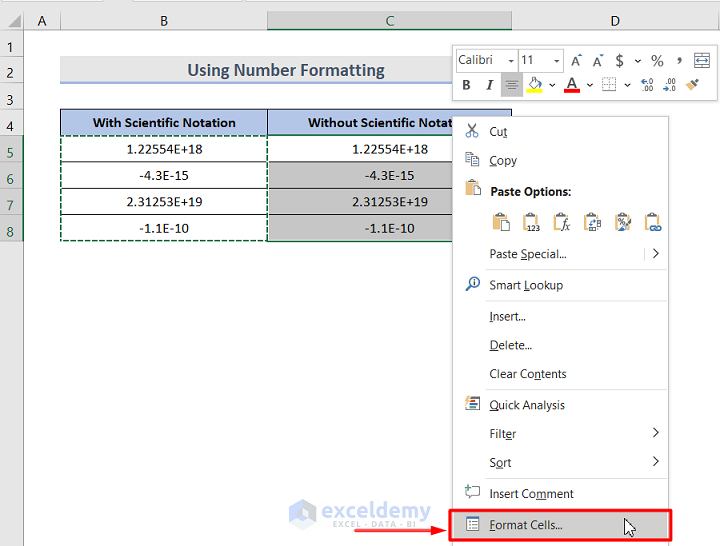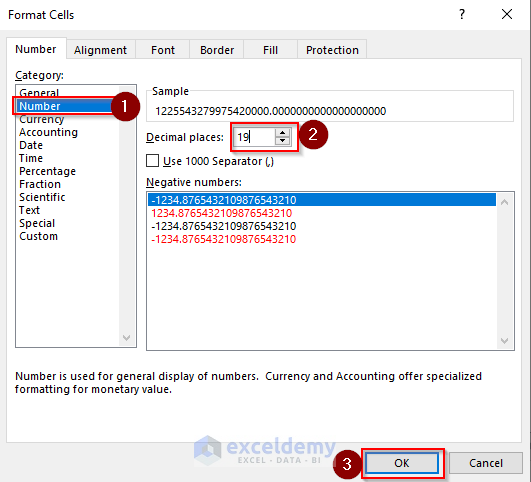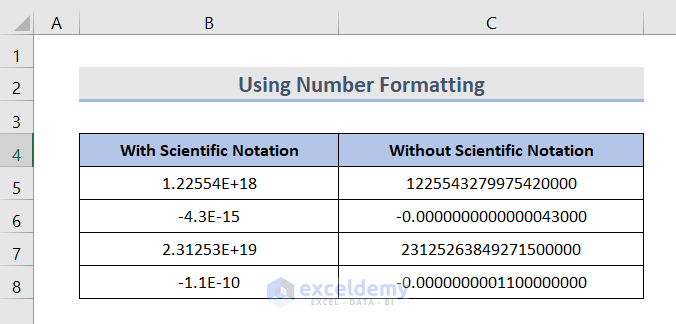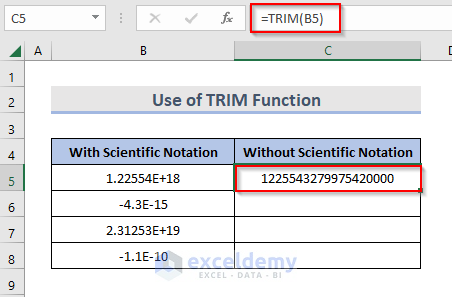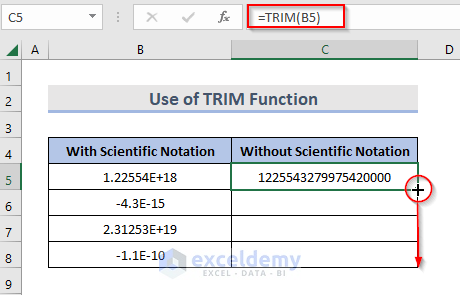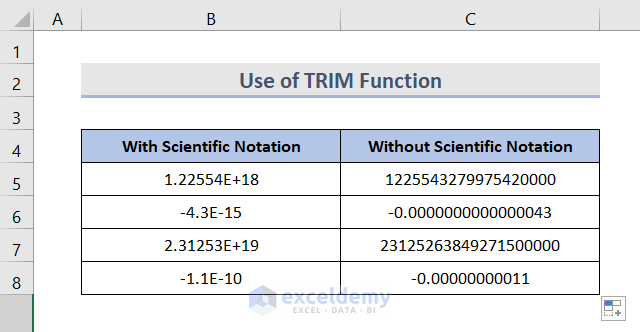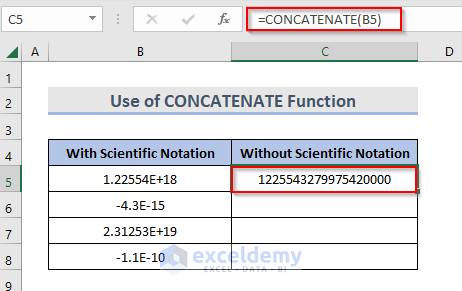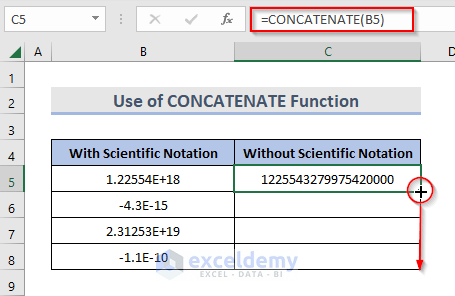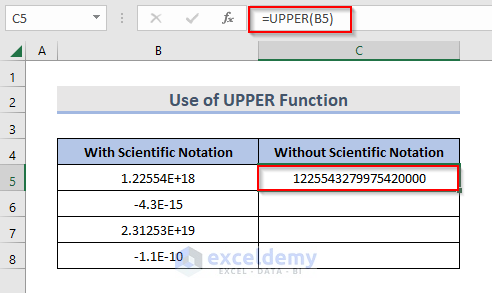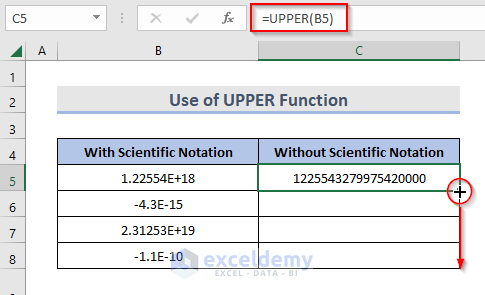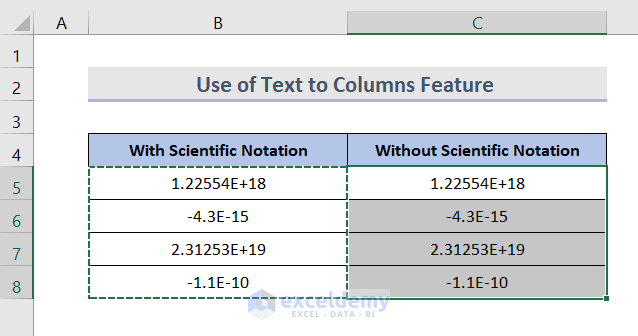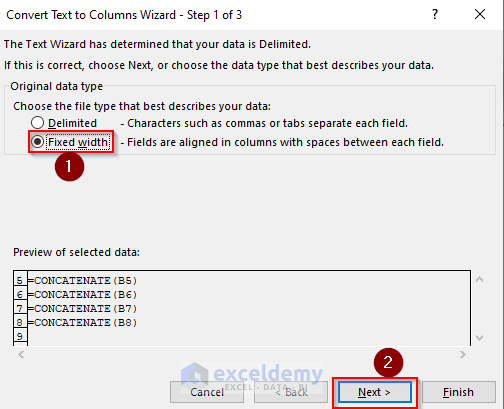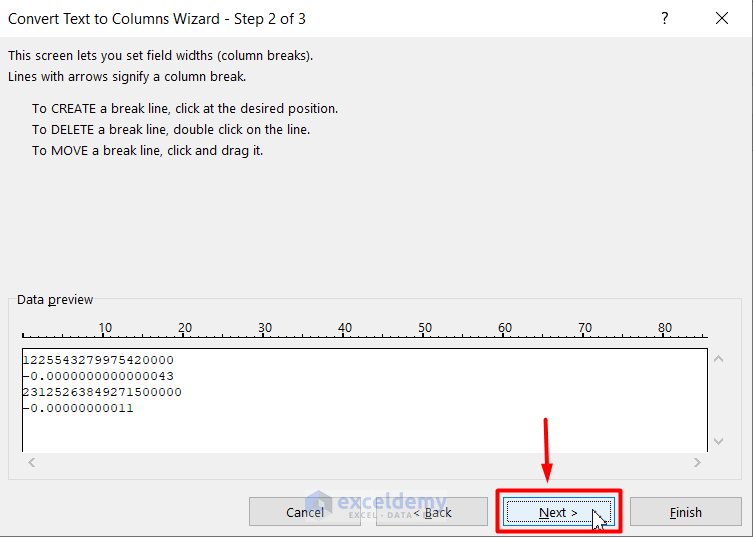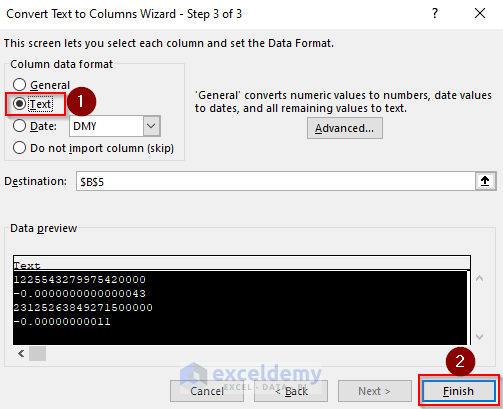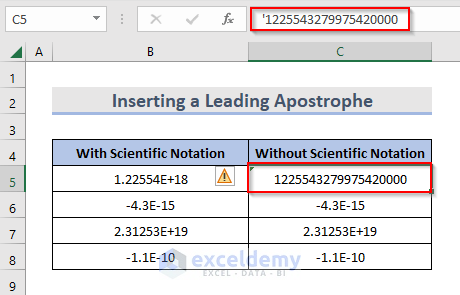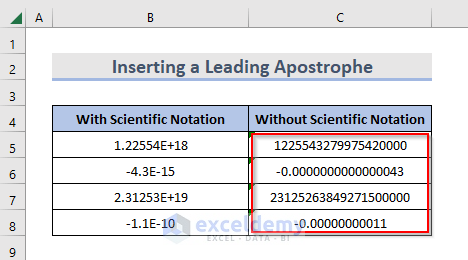In Microsoft Excel, large and small numbers are stored automatically into Scientific Notation by default. Excel has a number limit which is 15 digits. If your number digits are 15+ then, excel automatically converts that to scientific notation as a way of dealing with that limit. You can easily remove scientific notation in Excel by following the simple ways below.
What is Scientific Notation?
A special way of writing very small and very large numbers in a shorthand method is called scientific notation.
Read More: How to Enter Scientific Notation in Excel
Remove Scientific Notation in Excel: 4 Quick Ways
When you are working with Excel, the formulas will end up giving you values that look kind of strange. Actually, Excel gives you the number in scientific notation. So, when you have an E (Euler’s Number), you either have a very small number which is a negative exponent (E-) or you have a very large number which would be a positive exponent (E+) number.
Dataset Introduction
In the following example, there are two columns with Scientific Notation and Without Scientific Notation. We will take the first column numbers and remove the scientific notation. Cell (B5), (B7) contains very large numbers (E+ denotes the large positive numbers) and cell (B6), (B8) contains very small numbers (E- denotes negative small numbers).
1. Remove Scientific Notation Using Cell Formatting
In Excel, the Format Cells just change the aspect of a number without changing the number itself. For numbers, excel uses the General format by default. You can simply change the format by following the steps.
STEPS:
- First, Copy the first column numbers to the next column. Now, by selecting the numbers Right-click on your mouse.
- Then, select Format Cells. This will open the format cells dialog box.
- After that, from the Number tab, change the category General to Number.
- Then, Set the number of Decimal places to 19 and Press OK.
Now, you can see the number without any scientific notation.
But, remember that for the decimals having a noticeable amount of zeros (0) before a non-zero digit you have to increase the decimal places otherwise the numbers will show zero (0).
Read More: Convert Scientific Notation to Number in Excel
2. Erase Scientific Notation from Numbers Using Excel Functions
There are many ways to convert scientific notation to Standard notation. Some functions we are going to use are.
1. Trim Function, 2. Concatenate Function, 3. Upper Function
2.1 Use of TRIM Function
The TRIM function is used to remove extra spaces from data. It is also used to remove the scientific notation from data.
STEPS:
- First, write down the formula in Cell C5 and Press ENTER.
=TRIM(B5)- Then, Drag the fill handle to all the cells you want to use this formula.
Now, you can see your desired results.
2.2 Use of CONCATENATE Function
The CONCATENATE Function is used to combine values from several cells into one cell. We can use this function to remove the scientific notation.
STEPS:
- First, Write the following formula in Cell C5 and Press ENTER.
=CONCATENATE(B5)
- Then, Drag the fill handle over to the range you want to remove the scientific notation.
2.3 Use of UPPER Function
The UPPER Function is used to convert text to uppercase (all capital letters). It also can be used to remove the scientific notation from data.
STEPS:
- The associated formula in Cell C5 will be:
=UPPER(B5)- Then, Drag the fill handle over to the range you want to apply the formula.
You can apply any of the functions as you opt to choose.
3. Delete Scientific Notation by Using Text to Column Feature in Excel
The Text to Columns feature is also a great way to remove the scientific notation from your data.
STEPS:
- First, Copy the data from the scientific notation column and paste the data. Then, Select the cells you want to remove scientific notation.
- Then, Go to the Data tab in the ribbon.
- Next, Click on Text to Columns.
- Now, you can see a dialog box. Select Fixed width.
- Then, Click on the Next button.
- Then, click Next again in the second step of the wizard.
- After that, select General to Text from column data format. Then, Finish.
- And, finally, you can see the result.
Read More: Convert Scientific Notation to Text in Excel
4. Delete Scientific Notation by Adding an Apostrophe at the Beginning
You can also remove the scientific notation by just adding an apostrophe/a single quote (‘) before you enter the number.
Similarly, add apostrophe to all cells to remove scientific notation.
Things to Keep in Mind
Excel is unable to keep more than 15 digits of the original number, the other digits are changed to zeroes.
Download Practice Workbook
You can download the workbook and practice with them.
Conclusion
By following the steps, you can easily remove the scientific notation in your Excel workbook. All those methods are simple, fast, and reliable. Hope this will help you! If you have any questions, suggestions, or feedback please let us know in the comment section.
Related Readings
- How to Display Power in Excel
- How to Set Scientific Notation to Powers of 3 in Excel
- Prevent Excel from Converting to Scientific Notation CSV
- Excel Engineering Number Format
- Excel Scientific Notation Without e
<< Go Back to Scientific Notation in Excel | Number Format | Learn Excel
Get FREE Advanced Excel Exercises with Solutions!